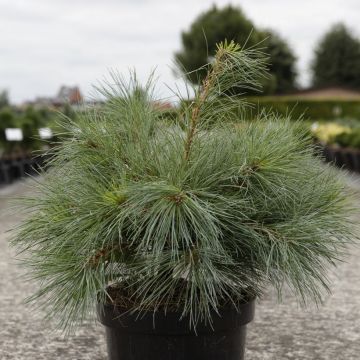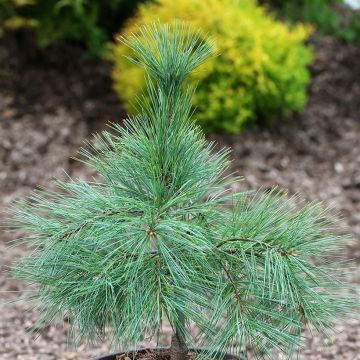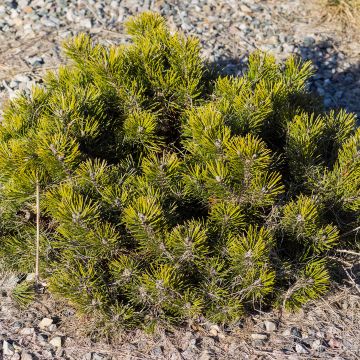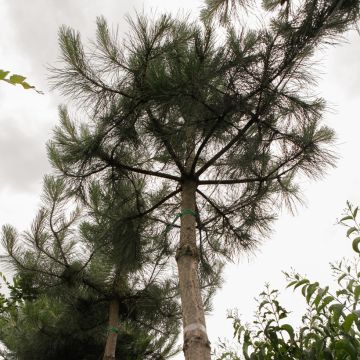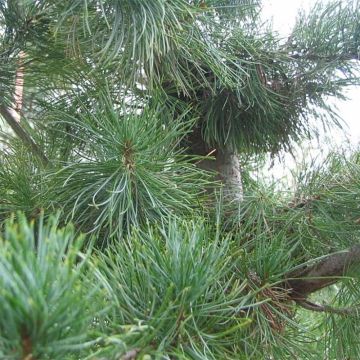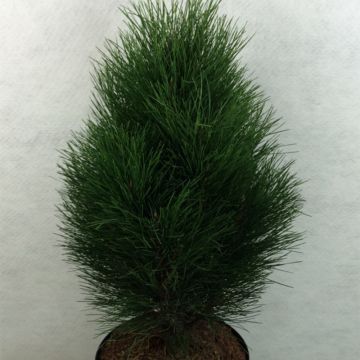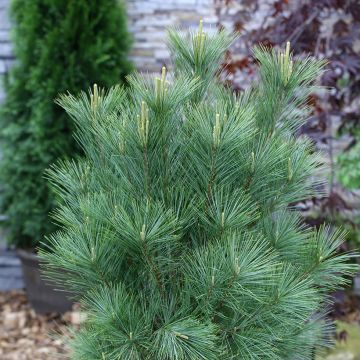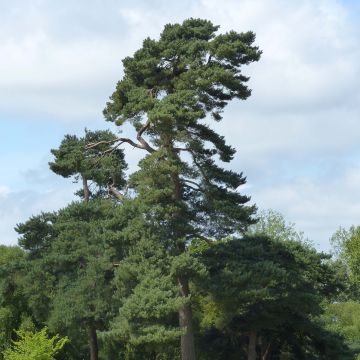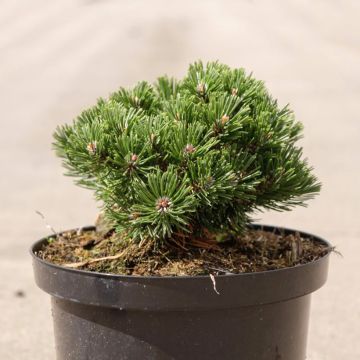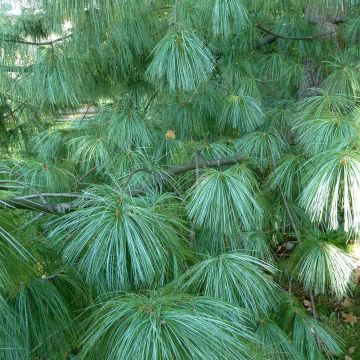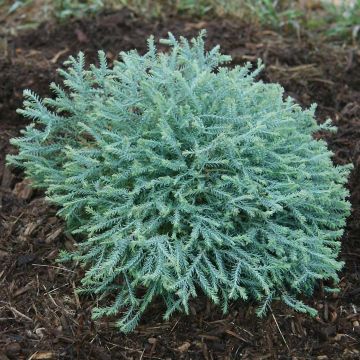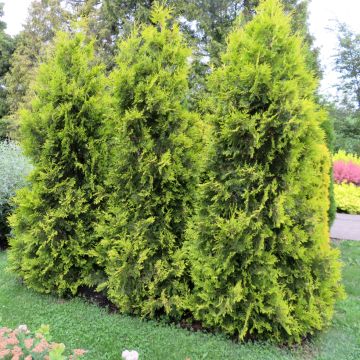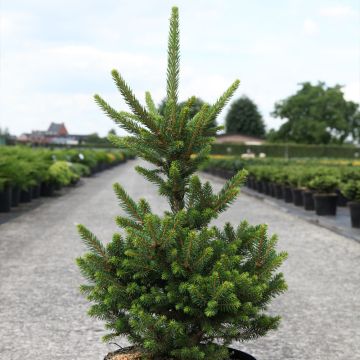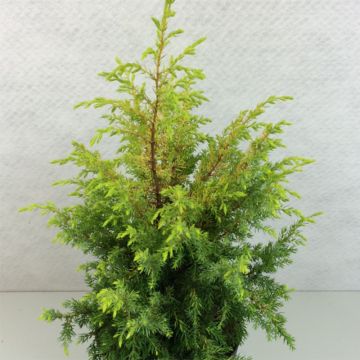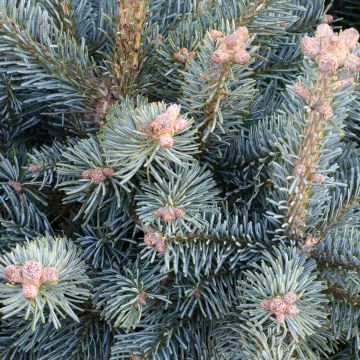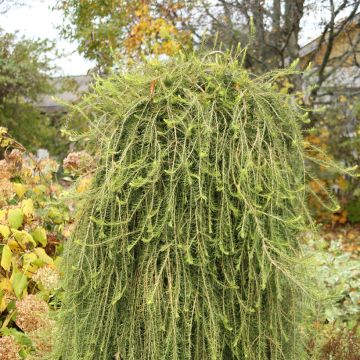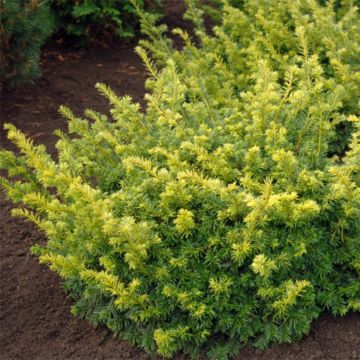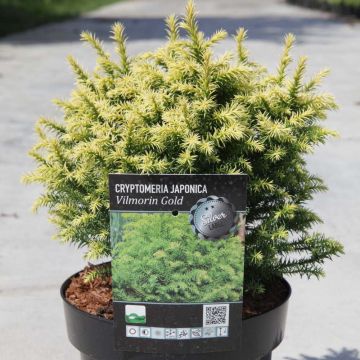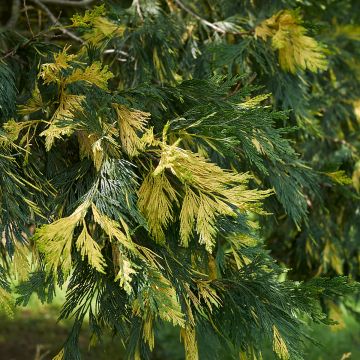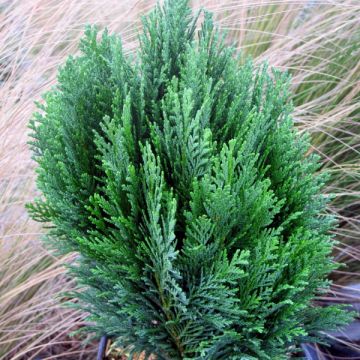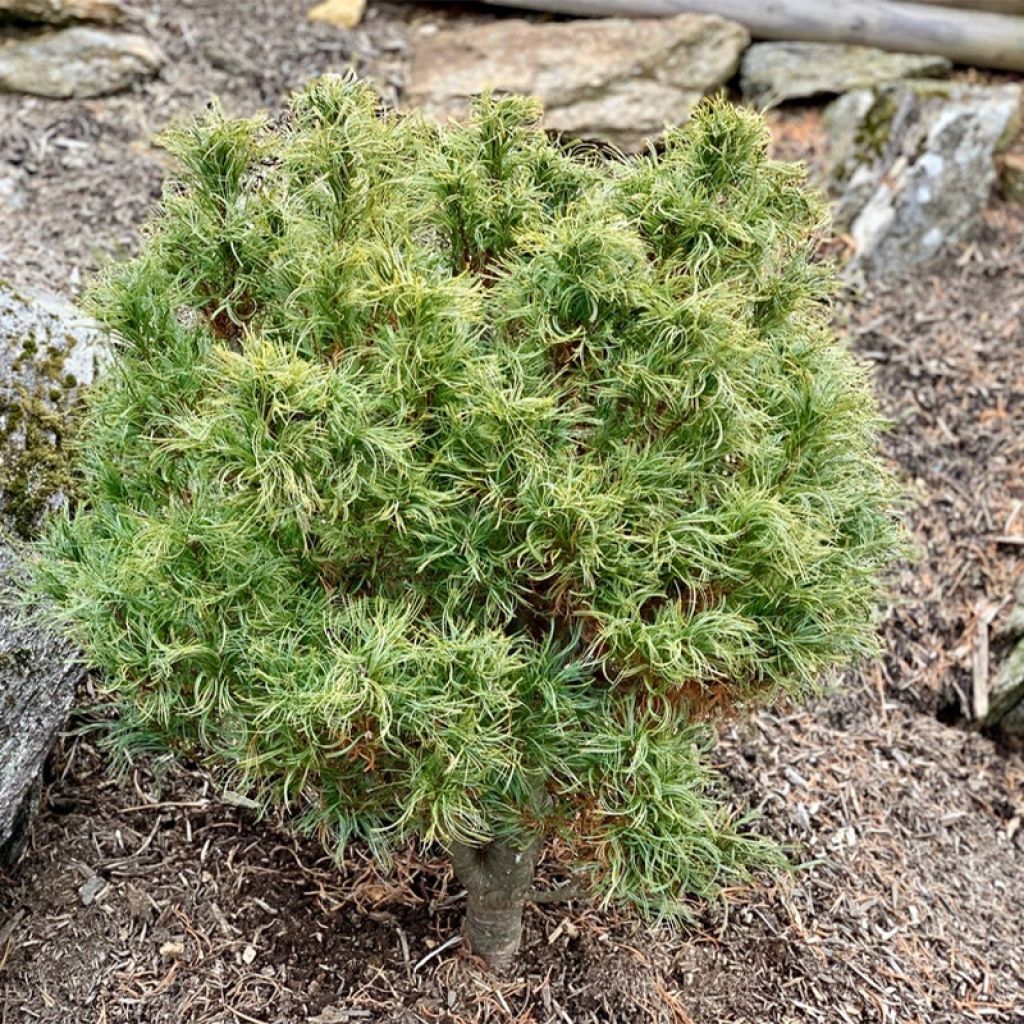

Pinus strobus Tiny Kurls - Eastern White Pine
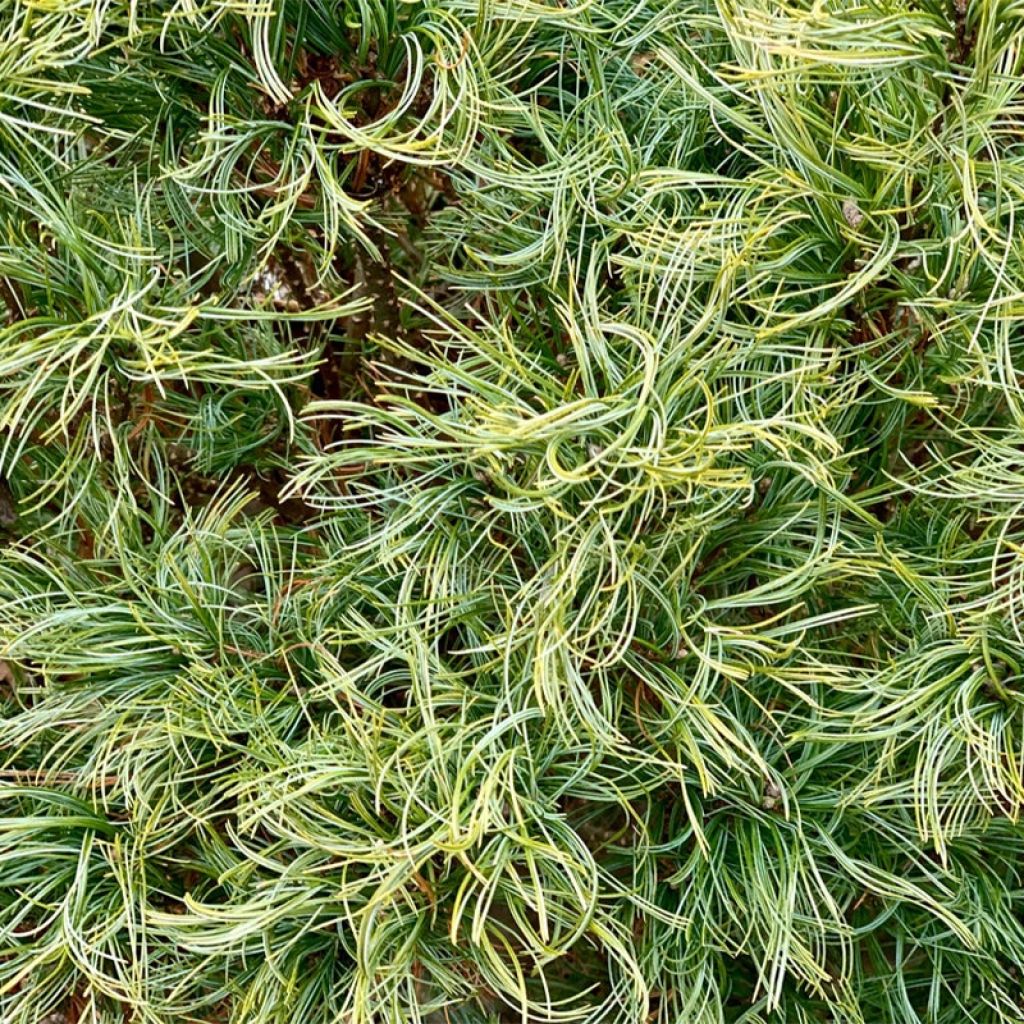

Pinus strobus Tiny Kurls - Eastern White Pine
Pinus strobus Tiny Kurls - Eastern White Pine
Pinus strobus Tiny Kurls
Eastern White Pine, Weymouth Pine, Northern White Pine
This item cannot be shipped to the selected country
Delivery charge from €5.90
Delivery to Corse prohibited
More information
Schedule delivery date,
and select date in basket
This plant carries a 24 months recovery warranty
More information
We guarantee the quality of our plants for a full growing cycle, and will replace at our expense any plant that fails to recover under normal climatic and planting conditions.
From €5.90 for pickup delivery and €6.90 for home delivery
Express home delivery from €8.90.
Delivery to Corse prohibited: UE law prohibits the import of this plant from mainland France to Corse as part of the fight against Xylella fastidiosa. Please accept our sincere apologies.
More information
Does this plant fit my garden?
Set up your Plantfit profile →
Description
Pinus strobus 'Tiny Kurls' is a dwarf form of the Weymouth pine, which owes much of its success to the delicacy of its large, bluish needles, thin and soft to the touch. Its bushy and flexible habit is initially rounded in the early years of its life, before taking on a conical shape later on. Its dense and sometimes irregular growth always gives it a compact appearance. Its slow growth and small size allow it to thrive in all gardens, even the smallest ones, from large slopes to rockeries, but also in flower beds or large pots on the terrace. It is a very hardy variety, not too demanding in terms of well-drained soil, and resistant to drought once established. It thrives in full sun as well as in partial shade.
Pinus strobus, also known as Eastern White Pine, Weymouth Pine or Lord's Pine, is a conifer belonging to the Pinaceae family, native to the eastern part of North America, up to Newfoundland Island in Canada. Its majesty has made it the official emblem tree of the state of Ontario. This forest king is indeed a monumental tree, a gigantic pyramidal Christmas tree reaching 90m (295ft) in height in its natural environment, but currently not exceeding 45m (148ft) in height due to the destruction of its habitat and extensive exploitation. It is a very hardy species, often planted for reforestation in forests, or as an ornamental tree in large parks. The bark of this bush is smooth, greenish-grey on young specimens, becoming greyish-brown and fissured over time. The lower part of the tree, when mature, shows a whitened bark, hence the vernacular name 'white pine'.
The 'Tiny Kurls' variety, or 'Tiny Curls' is characterized by its small size, its rounded and then more erect bushy habit, gradually taking on a conical shape over the years. Its growth is slow, so that at maturity, it does not exceed 2m (7ft) to 2.50m (8ft) in height with a spread of 1m (3ft) to 1.50m (5ft). Its branches are densely covered with shiny, thin, soft and flexible needles, measuring 7 to 12cm (3 to 5in) in length. They are grouped in fives and arranged in tufts, radially around the branches. Their lower surface has two bands of stomata (plant respiratory cells) that give them bluish to silvery reflections. An evergreen bush, it is decorative all year round with its graphic habit and the fluffy green-blue mass it eventually forms over time.
The 'Tiny Kurls' Weymouth Pine is a particularly attractive variety, but also a conifer with excellent health. It will find its place in all gardens, even the smallest ones, as it is undemanding and adapts to various soils, except for very chalky soils, as well as to many climates. In small spaces, it will stand out when planted alone, and will elegantly animate a rockery or flower bed. Planted in a large pot, it will be a magnificent focal point that will enhance a balcony or terrace.
It will go very well with other small-sized conifers with colourful foliage such as the fabulous Picea pungens 'Glauca Globosa' with its young foliage of unreal blue, turning silvery afterwards, or Platycladus orientalis 'Aurea Nana', a golden Oriental Thuja with a very structured habit that contrasts both in colour and foliage appearance. The astonishing Abies koreana 'Kohout's Icebreaker'® with even more curly and short foliage than our miniature Pine, will also be a very good companion.
Report an error about the product description
Pinus strobus Tiny Kurls - Eastern White Pine in pictures
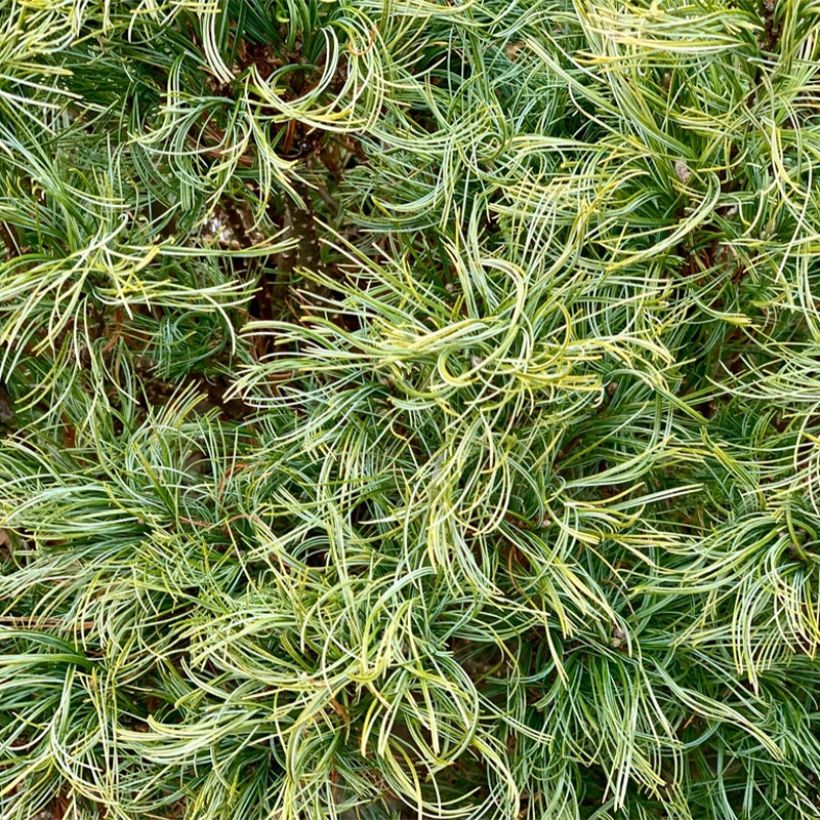

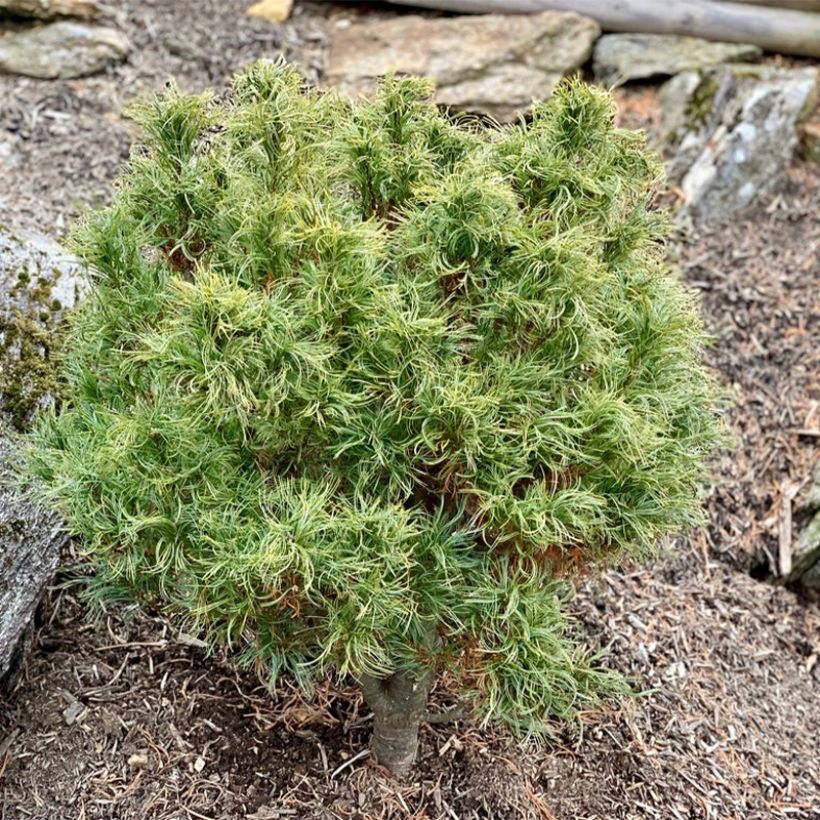

Plant habit
Flowering
Foliage
Botanical data
Pinus
strobus
Tiny Kurls
Pinaceae
Eastern White Pine, Weymouth Pine, Northern White Pine
Cultivar or hybrid
Other Pinus - Pine
Planting and care
Pinus strobus 'Tiny Kurls' can be planted from September to November and from February to June in ordinary but deep soil, even clayey, acidic or slightly calcareous, but well-drained. It prefers loose and light soils, sandy or loamy, and low in calcium. Choose a sunny or partially shaded location in a warm climate. Soak the root balls well before planting. Add organic amendment at planting and water generously for the first three years, and during prolonged droughts. Apply a special conifer fertilizer every year in April and cultivate the soil in summer. This very hardy conifer (down to at least -40°C (1°F)) is not afraid of wind, but it dreads waterlogged soils in winter and atmospheric pollution. Pruning is not necessary. However, to enhance the compact habit of this bush, spring bud removal can be carried out, and the year's shoots that are considered unsightly can be shortened by up to 2/3 of their length.
Planting period
Intended location
Care
This item has not been reviewed yet - be the first to leave a review about it.
Conifers
Haven't found what you were looking for?
Hardiness is the lowest winter temperature a plant can endure without suffering serious damage or even dying. However, hardiness is affected by location (a sheltered area, such as a patio), protection (winter cover) and soil type (hardiness is improved by well-drained soil).

Photo Sharing Terms & Conditions
In order to encourage gardeners to interact and share their experiences, Promesse de fleurs offers various media enabling content to be uploaded onto its Site - in particular via the ‘Photo sharing’ module.
The User agrees to refrain from:
- Posting any content that is illegal, prejudicial, insulting, racist, inciteful to hatred, revisionist, contrary to public decency, that infringes on privacy or on the privacy rights of third parties, in particular the publicity rights of persons and goods, intellectual property rights, or the right to privacy.
- Submitting content on behalf of a third party;
- Impersonate the identity of a third party and/or publish any personal information about a third party;
In general, the User undertakes to refrain from any unethical behaviour.
All Content (in particular text, comments, files, images, photos, videos, creative works, etc.), which may be subject to property or intellectual property rights, image or other private rights, shall remain the property of the User, subject to the limited rights granted by the terms of the licence granted by Promesse de fleurs as stated below. Users are at liberty to publish or not to publish such Content on the Site, notably via the ‘Photo Sharing’ facility, and accept that this Content shall be made public and freely accessible, notably on the Internet.
Users further acknowledge, undertake to have ,and guarantee that they hold all necessary rights and permissions to publish such material on the Site, in particular with regard to the legislation in force pertaining to any privacy, property, intellectual property, image, or contractual rights, or rights of any other nature. By publishing such Content on the Site, Users acknowledge accepting full liability as publishers of the Content within the meaning of the law, and grant Promesse de fleurs, free of charge, an inclusive, worldwide licence for the said Content for the entire duration of its publication, including all reproduction, representation, up/downloading, displaying, performing, transmission, and storage rights.
Users also grant permission for their name to be linked to the Content and accept that this link may not always be made available.
By engaging in posting material, Users consent to their Content becoming automatically accessible on the Internet, in particular on other sites and/or blogs and/or web pages of the Promesse de fleurs site, including in particular social pages and the Promesse de fleurs catalogue.
Users may secure the removal of entrusted content free of charge by issuing a simple request via our contact form.
The flowering period indicated on our website applies to countries and regions located in USDA zone 8 (France, the United Kingdom, Ireland, the Netherlands, etc.)
It will vary according to where you live:
- In zones 9 to 10 (Italy, Spain, Greece, etc.), flowering will occur about 2 to 4 weeks earlier.
- In zones 6 to 7 (Germany, Poland, Slovenia, and lower mountainous regions), flowering will be delayed by 2 to 3 weeks.
- In zone 5 (Central Europe, Scandinavia), blooming will be delayed by 3 to 5 weeks.
In temperate climates, pruning of spring-flowering shrubs (forsythia, spireas, etc.) should be done just after flowering.
Pruning of summer-flowering shrubs (Indian Lilac, Perovskia, etc.) can be done in winter or spring.
In cold regions as well as with frost-sensitive plants, avoid pruning too early when severe frosts may still occur.
The planting period indicated on our website applies to countries and regions located in USDA zone 8 (France, United Kingdom, Ireland, Netherlands).
It will vary according to where you live:
- In Mediterranean zones (Marseille, Madrid, Milan, etc.), autumn and winter are the best planting periods.
- In continental zones (Strasbourg, Munich, Vienna, etc.), delay planting by 2 to 3 weeks in spring and bring it forward by 2 to 4 weeks in autumn.
- In mountainous regions (the Alps, Pyrenees, Carpathians, etc.), it is best to plant in late spring (May-June) or late summer (August-September).
The harvesting period indicated on our website applies to countries and regions in USDA zone 8 (France, England, Ireland, the Netherlands).
In colder areas (Scandinavia, Poland, Austria...) fruit and vegetable harvests are likely to be delayed by 3-4 weeks.
In warmer areas (Italy, Spain, Greece, etc.), harvesting will probably take place earlier, depending on weather conditions.
The sowing periods indicated on our website apply to countries and regions within USDA Zone 8 (France, UK, Ireland, Netherlands).
In colder areas (Scandinavia, Poland, Austria...), delay any outdoor sowing by 3-4 weeks, or sow under glass.
In warmer climes (Italy, Spain, Greece, etc.), bring outdoor sowing forward by a few weeks.

































